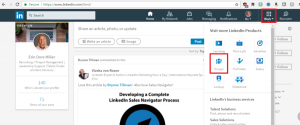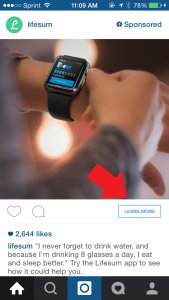You think you know absolutely everything about emails? It’s easy, right? You write a text, you put a subject line and press the send button. Piece of cake. Well, I think you’re cleverer than that, my friends. Because no one ever was successful at the email strategy by following just those three simple steps. There’s always way more to it than it meets the eye.
Now go back to the first sentence. See how far you’ve gone reading since then. The second sentence. The third and I already have you hooked up. It’s not a coincidence you know. In emails that role belongs to the first liner. Ring any bells? It’s the sentence people see first right after the famous ‘Dear Sir/Madam’ and it’s the sentence that determines the success of your whole email.
That sums pretty much all leading us to the vital part where you get to learn how to make your own first liners catchy, attention-gripping and totally unforgettable. Shall we begin?
Wake the curiosity

The most important part when writing the catchy first liner of your email is to make it as intriguing as possible. The recipient will surely read on if you wake the curiosity in them since the very beginning. Take this article. You were curious to see what I meant by calling you an email know-it-all. That’s how I got you to read everything all the way to here and still continue on. The same happens with emails. If you want your recipient to stay and see what the whole idea of the text is about, you should give them a catchy first liner.
For example, if you write an email to your potential customers in your restaurant, a possible catchy first liner could be ‘Maybe you won’t believe it, but I have good news and better news!’ Then go on writing about a new type of pizza you’re making or a new place you’re moving to and stuff like that. Write something like this and your recipients’ curiosity will be over the moon leaving you with a successful email and an idea well shared.
Questions are the new ‘Hello’

You must’ve noticed that nowadays people tend to ask you questions even before saying ‘Hello’. They want to state their problem immediately and get the answer. Their wish is your command, only in emails don’t waste time and provide both the question and answer in the same time. How to do that? Easy. Use the first liner. It’s a perfect place for a question that will contain the purpose of the whole email in it.
Starting with a question is a great step forward to creating the catchiest first liner. Not only that it grabs the interest of the reader but it also leaves them waiting for more. Waiting for an answer in the next sentences and for their own role in the whole purpose of the email. That way you hold them in your grasp until the end. Cool, right?
To illustrate, take a look at these first liners:
- What do you think about my dessert tasting event?
- Do you really want me to be your maid of honor?
- What do you get if you subscribe to my blog?
- Did you hear the news?
You notice how each and every one of them contains a touch of anticipation and excitement in them. They all lead to a certain point that the email will cover, giving the recipients a chance to understand your target since the beginning. Have a go yourself. Here are some examples of sales questions users wanted answered.
Show the mutual connection

“Hey, we’re buddies.” Of course you won’t write it like that but you should surely mean it. When constructing a first liner that’ll actually grip the attention of the reader, consider mentioning the mutual connection you have with the recipient. Everyone likes to see that you’ve thought of them and that you’re aware of the relationship the both of you have no matter if it’s a personal or a professional one.
For instance, as a food blogger you can start your email off by saying something like ‘I saw that you’ve left a comment on my latest post about the most famous international dishes, so I decided to write to you.’
Make every day Valentine’s Day

Bring out the flowers and chocolate. It’s time for a little flirting with your recipients. Show them your affection and lure them into your email from the beginning. And there’s nothing better than the first liner to do that.
Start by saying ‘I’m a fan of your work’ or ‘Congratulations on the new deal’ or ‘I came across your blog and I like your content.’ It doesn’t hurt to give the recipients a compliment or two especially when you know that it’ll be for your own benefit. Also you’ll have your catchy first liner that’ll show your thoughtful side to the people at once.
Keep it casual

In the end, you want the recipients to bond with you from the start. It’s the whole point of sending out the email, right? That’s why be yourself and try to sound like yourself as much as possible. What I mean by that is not to be too serious all the time, addressing the reader in a more casual tone in the first liner. Yes. As early in the email as that.
For example, after you write the necessary ‘Hello Mr. Smith’ or ‘Dear Sir/Madam’ drop a casual ‘How are you?’ or ‘How is your day?’ Of course there are certain occasions when you might not feel like speaking to someone like that especially if you don’t know the recipient so well, but it’s still catchy and promises success.
Time flies by fast, doesn’t it? Sentence after sentence we went from the first liner to down here before we knew it. That’s the purpose of your emails too. Try to implement some, if not all, of these points and construct your perfectly catchy first liner to grab the recipients’ attention from the start and hold them interested until the ‘Kind regards’ part. Maybe it’s hard to believe, but the first liner possesses a great deal of your email success in itself, so invest your time and effort in its creation. Tell us what you came up with in the comments!
Digital & Social Articles on Business 2 Community(133)







